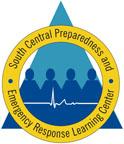
E005: Wastewater
Course Description:
This course provides an introduction to wastewater treatment and disposal. Relationships between public health concerns, water resources, and wastewater management are discussed. Emphasis is placed on health hazards and sanitation problems associated with wastewater management, causes of water pollution and the classification and control of water pollutants, municipal wastewater treatment processes, small waterborne onsite treatment and disposal systems, soils, and small waterborne onsite treatment and disposal systems for unsuitable soils and sites.
Target Audience
Academic Faculty/Staff, Federal Government Employees, State Government Employees, Local Government Employees, Non-Government Employees and Students
Learning Objectives
- Develop an understanding of the health hazards and environmental issues associated with proper wastewater management
- Gain insight into the causes of water pollution, how surface waters are classified, and the classification and control of water pollutants
- Understand the basic steps and various methods by which municipal wastewater is collected, treated, and discharged
- Become familiar with the components of small onsite wastewater treatment and disposal systems (including systems for unsuitable soils and sites), their function, and how onsite systems are designed and maintained
- Develop an understanding of the nature and properties of soils and their importance to onsite treatment and disposal systems
Instructor:

Allen Tartt
Director, AOWA Training Center
University Of West Alabama
Available Credit
- 4.00 Participation/CETulane Professional and Continuing Education (PaCE) awards 4.00 hour(s) of credit for completing E005: Wastewater
Price
Required Hardware/software
System Settings
This course is designed to work most effectively if your computer and internet connection meet certain minimal requirements. This course can be accessed using a Windows 10 PC or a Mac with High Sierra1, Mojave, or Catalina. Pop-up blockers should be disabled when viewing the course. Internet Explorer 11 (for Windows 10), or the current version of Google Chrome, Mozilla Firefox, or Apple Safari (for Windows 10 and or Mac) is required. Many of our courses require Java and JavaScript enabled.
Links to External Websites
Links to websites outside this course will open in a new window or tab. Some browsers may minimize the course window. If this occurs, maximize the course window to return to the course.
Adobe Acrobat Reader (for desktops and laptops)
Adobe Acrobat Reader is required to access some documents in this course. If you need to download a free copy of Acrobat Reader, click here.
Internet Connection Speed
A minimum download speed of 1.5 Mbps is recommended for an optimal experience, which is commonly the speed associated with a basic DSL or a cellular/satellite connection. A faster connection, such as cable or fiber service, with further enhance your online experience. A Wi-Fi connection is generally acceptable, but it is dependent upon one of the two services mentioned above. You can check your internet connection speed at http://www.speedtest.net/.

 Facebook
Facebook X
X LinkedIn
LinkedIn Forward
Forward